If You Realy Loved Me Read online
Page 7
"Linda's in a fountain, right in the base of the fountain, where she can hear the water cascading down twenty-four hours a day. She's way up where she can see the ocean—if it isn't a smoggy day. I loved her enough that I wanted her to have everything the way we discussed it."
Employees at the memorial park recalled David Brown. He bought two niches, and two dark verdigris antique-bronze plaques. He was not satisfied with the first chiseling of an inscription and ordered the job redone. His manner was so unyielding and arrogant that he was not remembered fondly.
For his own reasons, he had that first plaque removed and destroyed.
The Garden Grove investigators spread out in a half dozen directions, racing their own arbitrary twenty-four-hour deadline, aware that the most vital and pertinent information and evidence can only be retrieved during the first day and night following any murder. Just as physical trauma victims must be treated within that first "golden hour" to forestall deadly shock, homicide detectives have a "golden twenty-four hours." After that, people and things evaporate. Witnesses can rethink their stories, alter their perceptions, all unaware. Witnesses can be deliberately contaminated. Inexorable, invisible mutations of fact occur. The chances of an arrest's being made lessen.
A homicide investigation is, always, a race against time and change.
Fred McLean would begin with interviews of those who knew and/or were related to the David Brown family. He had heard only from David Brown and Patricia Bailey at this point, and they were in complete agreement about the dangerousness of Cinnamon Brown. With the confession from Cinnamon herself, the follow-up investigation did not seem to be a matter of finding a suspect.
Cinnamon Darlene Brown, fourteen, was the suspect.
Steve Sanders headed to the Manchester Building, the Juvenile Court building on The City Drive in Orange, part of an aging complex that housed the district attorney's juvenile offices in 1985—along with the Juvenile Court, Public Defender's Office, and the Department of Probation. The DA's Juvenile Division occupied offices on the third floor of the Manchester Building. Within a few hundred yards on either side of the building are the University of California (Irvine) Medical Center and the Sitton-Orangewood Children's Home.
Juvenile Hall loomed behind the Juvenile Court building, outdated as were all the juvenile facilities in the mid-eighties. There was then, and is today, an irony in the cluster of buildings. Abused children shout and laugh in the play yard of the Sitton-Orangewood Children's Home, so close to the Juvenile Hall where teenagers peer through bars. Too late, perhaps, to save the older kids—possibly too late for some of the babies.
Sanders knew it was time to confer with Deputy DA Dick Fredrickson, give him a synopsis of the case so far and see if charges could be filed against Cinnamon Brown for the murder of her stepmother.
From all the investigators could discern, Cinnamon's crime was murder without extenuating circumstances. The code in California was PC-187. The admitted shooter was only fourteen, but she had confessed to pulling the trigger three times. She was a juvenile, but her crime was adult.
Dick Fredrickson was no neophyte when it came to juvenile homicide suspects. Without intending to, Fredrickson had become the resident expert on teenage killers—a phenomenon that was becoming disturbingly commonplace in Orange County. Although Fredrickson usually served as an administrator, he had recently prosecuted two particularly ugly murders involving teenagers.
Kathy Sloane* was fourteen and her boyfriend, Sean Conley*, sixteen when they beat and stabbed Kathy's mother, Debbie Newton, thirty-six, to death on February 16, 1984. Ironically, the victim was a former chairwoman of the Orange County Coalition Against Domestic Violence and ran a shelter for female incest victims. She had allowed Sean Conley to live in the garage of her Fullerton residence— until she became alarmed over the sexual intensity of her fourteen-year-old daughter's romance and attempted to break the couple up.
The teenage lovers killed her for interfering.
Fredrickson had prosecuted Kathy and Sean for the murder as violent as any he had seen an adult commit. Physical evidence verified that each of them had used the weapon in the murder. Kathy was convicted of first-degree murder in an Orange County Superior Court in September of 1984 and sentenced to twenty-six years to life. Sean received the same sentence when he was convicted two months later.
Fredrickson had also prosecuted Alan Coates*, sixteen, for the sadistic murder of his mother, a woman he despised. His writings, found in school papers in his desk, revealed the depth of his hatred.
It was a growing problem for law enforcement all over America; when is a kid not a kid—at least in the eyes of the law? What is the cutoff point where a teenager should be prosecuted in adult court? Can such arbitrary decisions ever be made when one is dealing with human beings?
Now, Fredrickson studied the Linda Brown case synopsis Sanders handed him, then silently passed it over to the man sitting across the desk from him. Assistant district attorneys and investigators are paired off in twos. And on the morning of March 19, 1985, Dick Fredrickson was lucky enough to draw Jay Newell as his investigator.
Newell, thirty-nine, was a big, broad-shouldered man who looked like an athlete. In fact, he was a grudging—but habitual—runner. He was also a scuba diver because he reveled in the beauty and mystery far beneath the water's surface. He didn't play golf; he didn't bowl. Nevertheless, he ran in the Challenge Cup, a 120-mile relay from Baker, California, to Las Vegas each year to earn pledges for the policemen's widows and orphans fund. "I always run my ten K in the dark," he said. "When it's cooler."
Athletics came to Jay Newell with no encouragement from him; he would far rather sit on a stakeout. He coached and managed a Youth Soccer League team for nine years, but only because of his kids. One daughter was a volleyball star, and he was extremely proud of that. He was proud of both his daughters, and of his wife, Betty Jo, a highly successful businesswoman. Newell was totally disinterested in watching sports on television. The outcome of the Super Bowl or the World Series meant little to him, but the outcome of a homicide case walked with him constantly.
Newell was a detective with fourteen years of law enforcement behind him. This was what he did. This was what interested him. He was immensely talented at reading people, at judging their veracity by the way they shifted their bodies, averted their eyes, cleared their throats, breathed, smelled, gulped, smoked, drank.
A craggily attractive man with dark hair, soft eyes, and a strong chin, Newell could look like a country preacher, a slick real estate salesman, a biker, or a tough cop. He was an interrogator with a deceptively easy manner who lay in wait for one misstep.
He was a dogged pursuer. He never quit.
He was a dangerous enemy for a felon to have.
At eleven in the morning on that Tuesday in March, Jay Newell heard the name Cinnamon Brown for the first time. He read over the synopsis, noted the address on Ocean Breeze Drive, and headed out the door. "The first thing I do is to go to the scene. I'm not looking for anything in particular—I just want to get a feel, a sense of the place. It's a jumping-off point for me."
And so Newell drove to the Brown's rented bungalow. Morrissey and his crew were still picking up evidence as he approached the strangely quiet house.
Newell walked around the property first, noting the three vehicles still parked in the driveway after the Browns had left. There was an older, classic MG, a Ford Mustang, and a Chevy Monte Carlo. He ducked under the huge old maple tree, its trunk entwined with ivy. Even with the sun out, the backyard was dark, dappled with shadows. He saw the dog pen back of the garage and stared at the two red doghouses. The family had left the four little dogs behind, and they yapped hysterically.
Newell turned away, wondering what it must have been like for a fourteen-year-old girl, sick from a massive overdose, to wait the night out in a doghouse in the pitch-black chill. His oldest daughter wasn't much younger than Cinnamon Brown, and he had always tried to protect his girls from a
nything hurtful or frightening. It was hard not to compare.
The little trailer, its aqua and white paint rusting, dented here and there, was backed in so that it nudged the double glass doors between the two rear wings of the house, only a few steps from the back door that led to a utility porch. The hitch was propped on a brick and a slab of wood. Newell peered in the door and stepped back quickly to get away from the odor. The floor was dotted with dog feces.
The Terry trailer was a compact unit, maybe fourteen feet long with a built-in stove, refrigerator, and bunks. It would have been fun for kids to camp out in on a summer night, but it seemed a bit bleak in March—when the rest of the Brown family lived inside the house. Cinnamon had been provided with a portable television, a radio, and a heater. A large, well-worn teddy bear occupied the top bunk, and there was a Cabbage Patch doll on the bottom bunk.
Newell stepped into the house, nodding to Bill Morrissey and his crew. He padded down the hallways, memorizing the location of the rooms. The place looked normal, as if a family had just scattered to go to work and school. The kitchen was sunny, and someone—probably the victim— had had a green thumb. Vines and houseplants bloomed on shelves and tables. It was a "Donna Reed" kind of kitchen, cozy, immaculate, and welcoming.
Like the other investigators, Newell noted the proliferation of new, expensive furniture. The middle room along the south hallway was the most startling study in excess— especially when Newell contrasted it with the shabby trailer he had just seen.
It was a nursery—but what a nursery. The furniture was top of the line, just as in the rest of the house. There were enough toys for a dozen babies. Newell stopped counting at three dozen teddy bears, most of them Care-Bears in every color of the rainbow. There were a half dozen mobiles, toy chests, Sesame Street characters on the wall, an automated baby swing, a car seat, and a small herd of porcelain unicorns. Krystal's name was spelled out on one wall in giant letters.
Krystal Brown had obviously been a much-wanted baby, if you could judge by earthly possessions.
And now she had no mother.
Newell turned away.
The motive given in the police synopsis made sense. Fourteen-year-old child of a first marriage in the way. Stepmother—and maybe father—favor new baby. Teenager relegated to crummy trailer.
But something niggled. Newell paused to watch Morrissey sawing away at the wall in Patricia Bailey's room. Bailey had a lovely room too. His mind registered a question.
Where did Patti Bailey fit in, and why was she apparently held in more favor than David Brown's own older daughter?
Jay Newell talked to Patti Bailey the next day. She was a quiet, almost phlegmatic, girl. Her lack of animation made her more plain than pretty. She had obviously been crying, and her face was blank as she explained to the DA's investigator why she had come to live with her sister and brother-in-law.
Things had been tough at home, she said, without elaborating. "I visited every weekend, and then Linda said, 'If you're really having trouble, I don't mind if you come and live with me until you and Mom straighten things out, or until you're eighteen. I'd love to have you.' I said, 'Fine.'"
Whatever problems she might have saddled him with before, David Brown was fighting to save his teenage daughter now. Even as she lay unconscious, he had hired an attorney to see to her interests.
A1 Forgette had eighteen years experience as an attorney, and fifteen years of criminal law. He was a most respected attorney in Orange County, as much for his reputation for fair play as for his expertise. He had the face of a kindly prizefighter, broad shoulders, and wavy gray hair.
A1 Forgette listened as David Brown stressed that he would do anything he could to look out for Cinnamon. The man seemed grief stricken. He didn't understand why the tragedy had happened, but he didn't want Cinnamon going to jail.
Forgette agreed to take the case. It piqued his interest.
He went immediately to the Garden Grove Medical Center to see his client. But Cinnamon Brown was comatose. Forgette left his card and asked to be notified when she regained consciousness.
Officer Pamela French turned over her chair beside Cinnamon Brown's bed to Officer Kurt Roudybush at noon on Tuesday. "Gus" Ortiz took over the shift at eight that night. If Cinnamon should say anything, they would note it.
Medical personnel came and went, and one female medical student spent a good deal of time caring for Cinnamon.
Most of the treatments administered to Cinnamon had been—and continued to be—hideously unpleasant. On the way to the hospital, Garden Grove paramedics had administered Narcan intravenously—to attempt to reverse, at least partially, the respiratory depression that follows the ingestion of narcotics.
Sick as she was, the treatment of choice was to encourage more vomiting, and she was given syrup of ipecac. Cinnamon vomited again and again—until physicians were assured that no more Dyazide or Darvocet remained in her stomach. She was also given magnesium citrate to hasten the evacuation of any colon contents. What the medical experts could not yet know was exactly how much medication was already in her system and liver.
There was still the possibility that Cinnamon might die, although that was the worst-case scenario. Her vitals had been nearly normal when she began the interview with Fred McLean, but she had deteriorated with shocking suddenness.
Officers back at the house had had the distasteful task of counting the undigested capsules left in the vomit in the doghouse. They estimated there were twenty-four to thirty-six intact capsules and evidence of undigested time-release granules. Had Cinnamon not become violently sick to her stomach, it was doubtful that she would still be alive. The combination of Darvocet and Dyazide was deadly.
An overdose of Dyazide alone can be fatal when it throws the electrolyte balance in the body out of synch because of excessive depletion of fluids. Deep muscle reflexes are compromised, heart rhythm is disturbed, and death may ensue. One of the other side effects of overdose is, fortunately, nausea and vomiting.
Darvocet-N is a pain reliever and a central nervous system depressant. In a study on deaths by overdosage, 20 percent of those deaths occurred within the first hour after ingestion. Breathing is repressed, convulsions may occur, and the lungs fill with fluid. The heart loses normal sinus rhythm and all body systems fail. Again, nausea and vomiting may occur.
Cinnamon Brown had swallowed enough pills to be dead several times over, but her body had rejected them. She had either been very serious about committing suicide or unaware of the toxicity of what she had taken.
If she regained consciousness, there were other dangers ahead. She might develop pneumonia from fluid in her lungs, and there was a strong possibility that her liver would be damaged from the assault of chemicals.
At five-thirty on that long, long Tuesday afternoon, Cinnamon regained consciousness, fighting for air. She was being given Mucomyst with a face mask. It was another torturous treatment, an unpleasant-smelling vapor designed to clear her lungs of excess mucus. She would receive Mucomyst treatments for two days—until doctors were sure that her lungs were clear. It would take longer than that to ascertain if she had permanent liver damage.
A1 Forgette returned to the hospital and spoke very briefly with Cinnamon. He left, saddened. Whatever he would learn from his young client, her story was a tragedy. He reported to her father that he would talk to her more when she was feeling better.
At eight-thirty that evening, Cinnamon was moved by Southland Ambulance to the University of California Medical Center in Orange. Under a written order from Judge James Franks, Cinnamon was booked in absentia into the Orange County Juvenile Hall. She would remain under twenty-four-hour guard. Her official incarceration began at fifteen minutes after midnight on March 20, 1985.
Cinnamon Darlene Brown, fourteen, had entered the justice system of the State of California, County of Orange. She slept fitfully through the night, unaware of what that would mean to her.
deadlines in the Orange County Register and t
he Los Angeles Times trumpeted out the most salient aspect of Linda Brown's murder:
"Girl, 14, Held in Fatal Shooting of Stepmother."
Neighbors along Ocean Breeze Drive were hounded by reporters anxious to unearth details, something more about Cinnamon Brown and the woman she was accused of murdering. The police press release had contained nothing but the stark facts. For the most part, the press came up empty, or in many cases, misinformed. Articles added two years to David Brown's age and mistakenly said Linda Brown had suffered two bullet wounds to the abdomen— not the chest. Cinnamon Brown was reported to be suffering "from an unspecified illness" in a hospital.
The few neighbors who had had any dealings with the Brown family were at a loss to explain what had happened, not because they had known the family well and been shocked at the tragedy, but because they really didn't know the Browns at all. One sixteen-year-old schoolmate of Patti's and Cinnamon's told reporters that Cinnamon was strange, a girl who had "invisible friends and stuff like that." The girl, feeling somehow important because she had even a slight connection to the Browns, said she thought Cinnamon had come to live with her father because she couldn't get along with her mother. She also pointed out that she thought it was "weird" that Cinnamon and Patti had dressed in costumes for Halloween and gone trick-or-treating. "Patti was a witch, and Cinnamon was an old man—I thought that was rather immature for somebody that age."
Pickings were slim indeed for reporters aching for sinister portents.

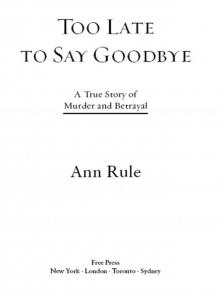 Too Late to Say Goodbye: A True Story of Murder and Betrayal
Too Late to Say Goodbye: A True Story of Murder and Betrayal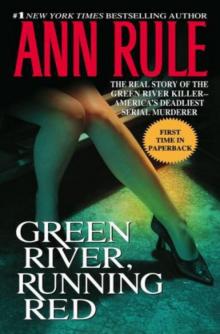 Green River, Running Red
Green River, Running Red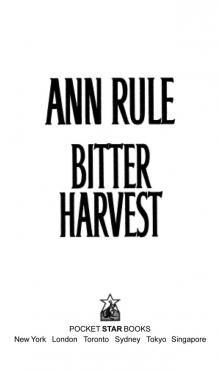 Bitter Harvest
Bitter Harvest Dead by Sunset: Perfect Husband, Perfect Killer?
Dead by Sunset: Perfect Husband, Perfect Killer?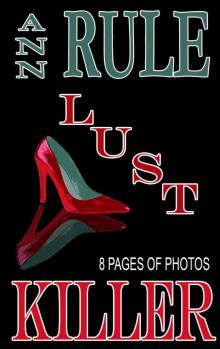 Lust Killer
Lust Killer And Never Let Her Go: Thomas Capano: The Deadly Seducer
And Never Let Her Go: Thomas Capano: The Deadly Seducer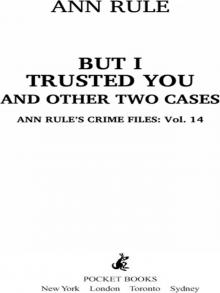 But I Trusted You and Other True Cases
But I Trusted You and Other True Cases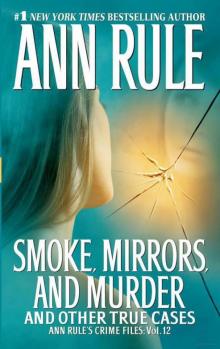 Smoke, Mirrors, and Murder and Other True Cases
Smoke, Mirrors, and Murder and Other True Cases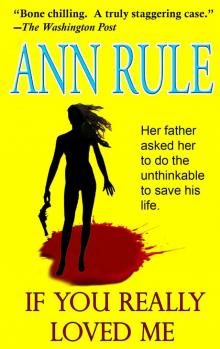 If You Really Loved Me
If You Really Loved Me Kiss Me, Kill Me and Other True Cases
Kiss Me, Kill Me and Other True Cases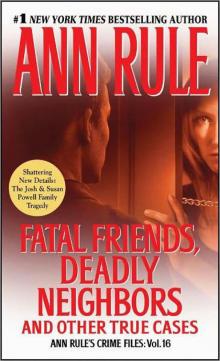 Fatal Friends, Deadly Neighbors and Other True Cases
Fatal Friends, Deadly Neighbors and Other True Cases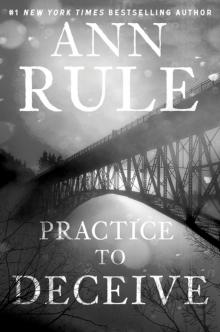 Practice to Deceive
Practice to Deceive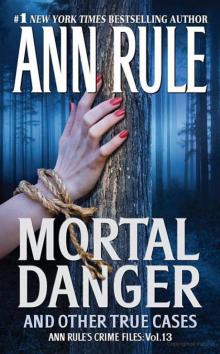 Mortal Danger and Other True Cases
Mortal Danger and Other True Cases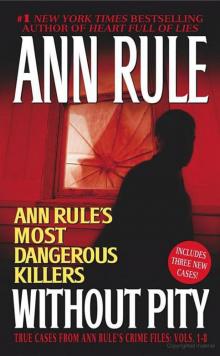 Without Pity: Ann Rule's Most Dangerous Killers
Without Pity: Ann Rule's Most Dangerous Killers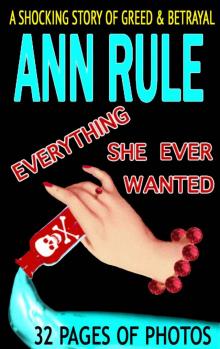 Everything She Ever Wanted
Everything She Ever Wanted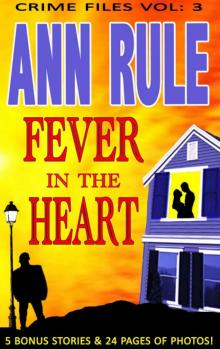 A Fever in the Heart and Other True Cases
A Fever in the Heart and Other True Cases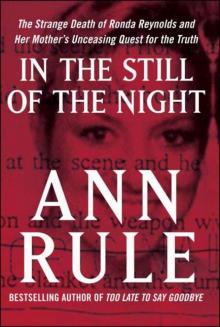 In the Still of the Night
In the Still of the Night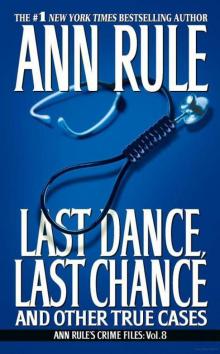 LAST DANCE, LAST CHANCE - and Other True Cases
LAST DANCE, LAST CHANCE - and Other True Cases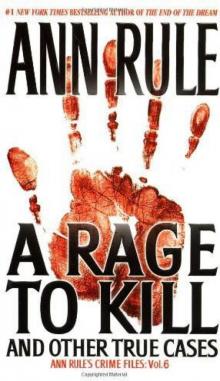 A Rage to Kill
A Rage to Kill The I-5 Killer
The I-5 Killer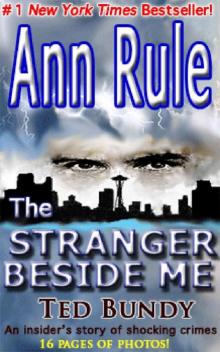 The Stranger Beside Me
The Stranger Beside Me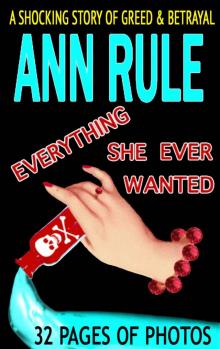 Everything She Ever Wanted: A True Story of Obsessive Love, Murder, and Betrayal
Everything She Ever Wanted: A True Story of Obsessive Love, Murder, and Betrayal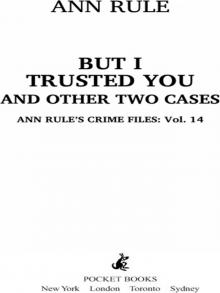 But I Trusted You
But I Trusted You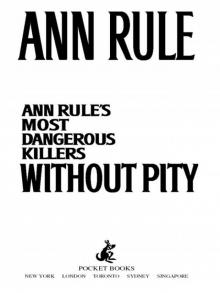 Without Pity
Without Pity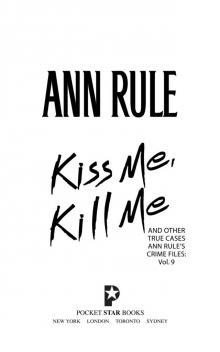 Kiss Me, Kill Me
Kiss Me, Kill Me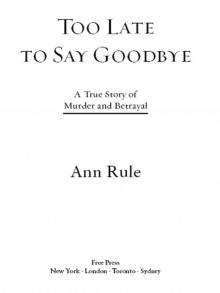 Too Late to Say Goodbye
Too Late to Say Goodbye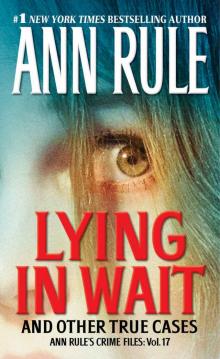 Lying in Wait
Lying in Wait Fatal Friends, Deadly Neighbors
Fatal Friends, Deadly Neighbors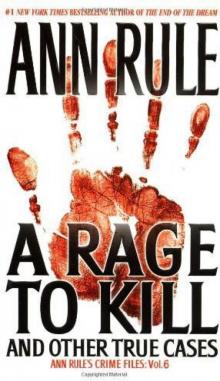 A Rage to Kill: And Other True Cases
A Rage to Kill: And Other True Cases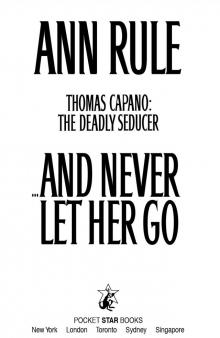 And Never Let Her Go
And Never Let Her Go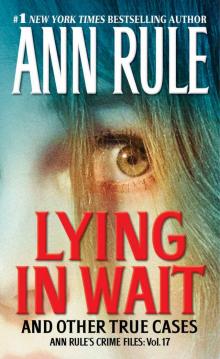 Lying in Wait Ann Rule's Crime Files Vol.17
Lying in Wait Ann Rule's Crime Files Vol.17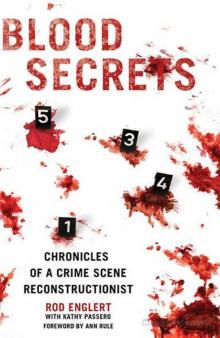 Blood Secrets: Chronicles of a Crime Scene Reconstructionist
Blood Secrets: Chronicles of a Crime Scene Reconstructionist No Regrets
No Regrets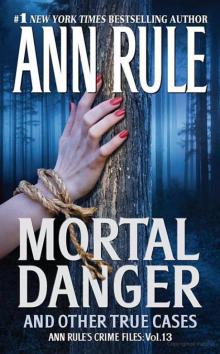 Mortal Danger
Mortal Danger But I Trusted You: Ann Rule's Crime Files #14
But I Trusted You: Ann Rule's Crime Files #14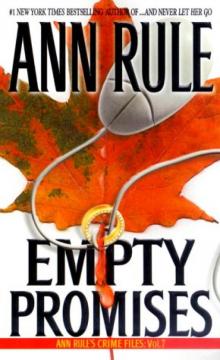 Empty Promises
Empty Promises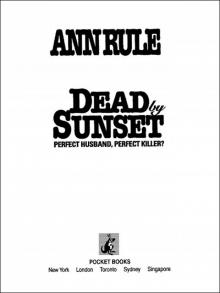 Dead by Sunset
Dead by Sunset Last Dance, Last Chance
Last Dance, Last Chance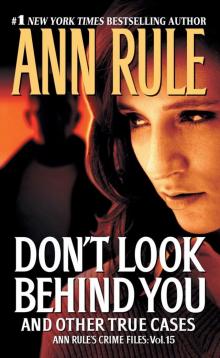 Don't Look Behind You
Don't Look Behind You